The Experience Is The Entire Point
Let's Get Lost, Issue #39, Managing expectations, Chicken in cream sauce, White fish with garlic aioli and olive tapenade, Pistachio Napoleon, Denver chocolate cake
Before we begin, I have a special offer for all of you who have been considering upgrading to a paid subscription and joining The Lost Supper Club. Join today and you’ll receive the digital version of the Let’s Get Lost Cookbook for just .99¢
Also, founding members receive a signed hard cover print copy of the book, which I mail to them personally.
❤️ Thank you for being here.
The experience is the entire point

I spend a lot of time planning our travel itinerary every year. Over the span of 2025, we’ll park ourselves at 15 different campgrounds in 10 different states. The logistics of deciding where we want to go, finding campgrounds or boondocking spots in those locations, reserving spaces, and making travel plans requires many hours and a ton of research. (Here’s where you can view our 2025 itinerary.)
Obviously, one of the goals is to discover beautiful, interesting places. But that’s actually not the point. The point is to simply experience what there is to experience there.
Before moving into an RV, Steve and I spent years riding around the country on a motorcycle. When our kids were young, our family vacations were often road trips. Road trips give you the opportunity to see what’s around every corner. There’s no requirement to like it because whether or not you like it is not the point. The point is to see what’s around the corner.
The experience of a trip includes the actual travel, not just the destination.
This may sound like semantics, but for me the difference is important.
All the planning is valuable. But after that, the only real control I have over the experience is how I think about it.
It might rain the entire time we are there. We might end up parked next to obnoxious neighbors. The reality might not align with the photos. Any number of things could interfere with the things we want to do and see there. We might get sick. We might have to leave to attend to a family emergency. Steve might have to travel for work. We might get sidelined with mechanical breakdowns.
If our enjoyment of travel was dependent on the experience matching our expectations, we would have given up on the whole thing a long time ago.
Last weekend we were guests at a party hosted by Lost Supper Club member Jenn Sharp. Jenn is a dinner party aficionado and you’ll get to see EXACTLY what that means in next week’s issue. Jenn spends months planning extravagant, magazine worthy parties that are the talk of the town. Every detail is accounted for. Nothing is left to chance. She works incredibly hard to bring her magical ideas to life. And yet, no amount of planning and work will guarantee a particular experience. Here is what she told me,
“I am a flurry of activity right up until the first guest arrives. Then I relax and just enjoy the experience of the party as it is, not as I hope it will be.”
There have been many times in my life when my expectations have ruined the actual experience. I am trying to do that less. I am trying to not ruminate and romanticize about what could have been or should have been and just be in the actual experience, as it is, whatever it is. It’s the only thing that’s real and true.
From Lost Supper Club member Claudia Byers who left this comment on a recent post:
“I never want to stop learning, either. Life is full of experiences, never endless. Who knows what is going to be around the next corner.”
Me too, Claudia.
For the comments
How have you learned to manage you expectations so they don’t interfere with the actual experience?
This and that
Speaking of releasing our expectations and accepting what is, I love this note from Kelly Flanagan.
~
This month, I’ve been reading Hello Beautiful by Anne Napolitano, The Book of Delights by Ross Gay, and Jungalow by Justina Blakeney. What are you reading, friends?
~
Since we are in the South, I’ve been reading a lot of southern cookbooks and am especially loving In Pursuit of Flavor by Edna Lewis.
I love how the book is organized - From the Gardens and Orchards; From the Farmyard; From the Lakes, Steams, and Oceans, etc. And Edna’s recipes are the definition of simplicity. She understands how to make ingredients shine. The book inspired the recipe below for Sautéed chicken in cream sauce.
~
And also, this quote is also taking up a lot of space in my mind lately…
“We don't set out to save the world; we set out to wonder how other people are doing and to reflect on how our actions affect other people's hearts.” ~Pema Chödrön
New on the blog: Pistachio Cream Cake
Oh friends. Wow wow wow.
This pistachio cream cake is like an actual mic drop for your next dinner party or birthday party or anything party. It's what we like to call a show stopper and so good it's guaranteed to impress everyone you choose to share it with.
If you're looking for a dessert that people will be talking about for daaaaaays, you can stop right now because this cake will knock the socks off anyone lucky enough to get a slice.
The cake includes two thick layers of pistachio pastry cream, which you will also find in the pistachio Napoleon below because once you make it, you want to add it to everything.
A few of my favorite things
This cast iron braiser. I’ve mentioned this pan many times, but it’s honestly one of the hardest working things in my kitchen. You’ll see it mentioned in many recipes including the sautéed chicken and cream sauce and white fish with olive tapenade in this issue.
The Ninja Cremi. This is also something I’ve mentioned before. Our daughters gave it to me for Christmas and I’ve been using it several times a week ever since. My current obsession is frozen yogurt for breakfast.
Here’s how I make it: Add plain, unsweetened Greek yogurt, stevia, lime juice, and fresh fruit to the blender and puree. Pour the mixture into the pint containers that come with the Cremi, and put them in the freezer. In the morning, it takes about 2 minutes for the machine to turn it into frozen yogurt. Sometimes I blend it twice, which makes it even smoother.
Eating it for breakfast, sometimes with some granola and more fresh fruit, feels like we are eating ice cream for breakfast. And as far as I’m concerned, ice cream for breakfast is always a good idea.
Sautéed chicken in cream sauce with asparagus
I watched a wonderful PBS documentary while in Louisiana called Finding Edna Lewis. Ms. Lewis was a renowned chef, writer, and author of several cookbooks including In Pursuit of Flavor, a book I recently added to my collection. She is often referred to as “the first lady of Southern cooking” and one of the first (if not THE first) chefs and recipe writers to place a heavy emphasis on farm-to-table seasonal food.
It’s difficult to over emphasize the influence that Edna Lewis has had on Southern cooking and reading her cookbooks is an education unto itself. Much as Julia Child taught Americans about French cooking, Edna Lewis changed how America saw the South and southern cooking.
This recipe is loosely based on a sautéed chicken recipe from In Pursuit of Flavor, but you’ll find versions of it throughout the South. It’s both simple and decadent, hearty and satisfying, and endlessly customizable to personal preferences and what’s in season.
For example, give this dish a cajun flair by swapping out the Italian seasoning and paprika for cajun or creole seasoning. Replace the asparagus with any other vegetable you like. It’s particularly good with fresh spring peas, summer sweet corn, or sautéed mushrooms.
In this recipe, the chicken and cream sauce is served over rice, but it’s just as delicious served with mashed potatoes, buttermilk biscuits, or cornbread.
4 servings
Time: 60 minutes
Ingredients:
2 pounds fresh asparagus
Salt and pepper
2 pounds boneless, skinless chicken breasts, thighs, or tenders
1 cup all purpose flour
2-3 tablespoons salted butter, divided
1 tablespoon vegetable, canola, or olive oil
About 1/4 cup chopped yellow onion
3 - 4 large cloves of garlic, minced
1 tablespoon Italian seasoning
1 teaspoon smoked paprika
1 large lemon, cut in half
1/2 cup dry white wine or dry vermouth
1/2 cup heavy cream
2 cups cooked rice, for serving
Tomato salad, for serving: 2 cups chopped tomatoes, tossed with a drizzle of extra virgin olive oil and salt and pepper to taste
Instructions:
Snap the asparagus spears in half, allowing them to break wherever they naturally want to. Reserve the tops of the spears and discard the bottom half of the spears. Fill a 3 quart saucepan about halfway full with water and add enough salt to make the water taste salty. Set the saucepan over high heat. When the water starts to boil, add the asparagus. Cook for 2-3 minutes, just long enough to tenderize the spears slightly but retain their crispness. Drain and set aside.
Heat the oven to 300 degrees F.
Lay the chicken on paper towels and blot with another paper towel to remove excess moisture.
Add the flour to a small bowl and add 1/2 teaspoon ground black pepper and 2 teaspoons of salt. Stir to combine.
Dredge each piece of chicken in the flour, coating it on all sides; shake to allow excess flour to fall off, and set the flour coated pieces on a plate.
Add 1 tablespoon of the butter and 1 tablespoon of oil to a large skillet or braiser and set it over medium-high heat. When the butter has melted and is foamy, add the chicken. Cook the chicken for 2-3 minutes on each side, until the meat is just starting to brown. Remove the chicken from the pan, placing the pieces on a clean plate.
Lower the heat to medium and add another tablespoon of butter if the pan looks dry. Add the chopped onion and cook for 3-4 minutes, until the onions are soft and translucent. Add the garlic, Italian seasoning, and paprika and cook, stirring, for 1 minute longer.
Add the chicken back to the pan. Squeeze the juice from one half of the lemon over the chicken. Cover the pan and set it in the oven to bake until the chicken is cooked through, about 15 minutes. When done, it will register 165 degrees F on a meat thermometer and when you cut a piece in half, there will be no pink on the inside.
While the chicken bakes, add the remaining tablespoon of butter to another skillet or saucepan and set it over medium-high heat. When the butter has melted, add the asparagus. Cook until the asparagus is starting to brown and is the right amount of tender for you. Squeeze some of the juice from the other half of the lemon over the asparagus, toss it around to coat, and remove the pan from the heat. Taste and season with more lemon juice and/or salt and pepper, if desired.
Remove the chicken from the oven and set it on a plate. Cover with aluminum foil to keep warm.
Return the skillet or the braiser to the stovetop and set it over high heat. Add the wine and cook, scraping the bottom of the pan to loosen any brown bits, until the wine is reduced to about 2 tablespoons. Lower the heat slightly and pour in the cream. Cook for 2-3 minutes, until the sauce has thickened slightly. Taste and add more salt and pepper if desired.
To serve: add some rice to a plate and top with chicken. Spoon the cream sauce over the chicken and serve with asparagus and tomato salad.
Red Snapper with olive tapenade and garlic aioli
Speaking of expectations and experience, in last week’s issue of The Lost Supper Club, I told a story about how a mix up with our campground reservation dates resulted in us spending a delightful evening with our neighbors, who we would never have met if the mix-up hadn’t occurred.
Those new friends gifted me a container of homemade olive tapenade and it was so good, I made some more and have been happily smearing it on everything, including these simple fish fillets.
This is a very quick and easy meal to prepare. The garlic aioli and olive tapenade only take a few minutes to make and can be prepared days in advance if you like. For the most flavor, allow the fish to soak in some lemon juice for about an hour before cooking. After that, it will be cooked and on the table in about 15 minutes.
Time: 15 minutes + 1 hour of resting time
Serves: 4
Ingredients:
4 white fish fillets (about 2 pounds total). Good options include: whiting, tilapia, cod, bass, grouper, haddock, catfish, and snapper
1 lemon
Salt
6 tablespoons salted butter
2 large cloves of garlic, minced
4 tablespoons garlic aioli (recipe follows)
3/4 cup Olive tapenade (recipe follows)
Instructions:
Set the fish in a shallow dish and squeeze the juice from half of the lemon over it. Place the fish in the refrigerator, uncovered, to rest for for 1 hour.
Heat the oven to 425 degrees F.
Remove the fish from the refrigerator and sprinkle with a small amount of salt. Be light handed with the salt. The fish doesn’t need much.
Add the butter to a large skillet or braiser and set it over medium high heat. When the butter has melted, add the minced garlic. Cook the garlic in the butter until the butter begins to brown, then add the fish. Cook on one side for 2-3 minutes, until nicely browned, then gently turn the fish over and place the pan in the oven, uncovered.
Let the fish bake in the oven for about 4-8 minutes, depending on the thickness of the fillets. To test that the fish is done cooking, gently insert a fork into the thickest part of one of the fillets and pull it back. If it flakes easily, without resistance, it’s done.
Remove the pan from the heat and squeeze the other half of the lemon over the fish.
Set the fish on serving plates. Smear each piece with about 1 tablespoon of aioli and then top with 2-3 tablespoons of tapenade.
Olive tapenade:
Makes about 4 cups of tapenade
Time: 15 minutes
16 ounces (about 3 cups) pitted olives
8 ounces oil packed sun dried tomatoes
1/2 cup extra virgin olive oil
1/4 cup nonpareil capers
1/4 cup fresh lemon juice, more to taste
4 large cloves of garlic
4 anchovies or about 2 teaspoon anchovy paste
About 1/2 of a cup of fresh Italian parsley
Add all the ingredients to a food processor and pulse until combined but still chunky. Be careful to not process it into a paste. Taste and add more lemon juice and/ or a bit of salt and pepper if desired.
Store in the refrigerator. Olive tapenade will keep well for up to 2 weeks.
Other ways to use olive tapenade:
Do as our friends did, and give it to friends and neighbors!
Smear it on pizza or flatbread
Toss it with cooked pasta - even better if the pasta is homemade!
Spread it over crusty bread or crackers
Use it to make this stuffed flatbread
Spread inside a Montana roll - one of my favorite recipes in the Cookbook! (Paid subscribers will also find the recipe for Montana rolls in the 2024 recipe index.)
Garlic aioli
Time: 15 minutes
Makes: a generous 1/2 cup
Ingredients
1 tablespoon lemon juice
2-3 clove of garlic
1 teaspoon dijon mustard
1 teaspoon smoked paprika
½ cup prepared mayonnaise
Add the lemon juice to a bowl. Use a garlic grater to grate the garlic into the lemon juice. Alternatively, finely mince the garlic. Add the dijon mustard, smoked paprika, and about ¼ teaspoon each of salt and pepper. Stir to mix and let rest for 10 minutes, which will soften the sharp edges of the garlic. Add the mayonnaise. Stir to combine, then cover and refrigerate until ready to use.
Hey there, paid subscribers, this aioli is also used in this recipe for Chimichurri Steak Fries in Lost Supper Club, Issue#3.
Pistachio napoleon
The classic Napoleon dessert, with it’s layers of crispy puff pastry and rich vanilla pastry cream, is one of my favorite things to make for dinner parties. This is true whether we are having 2 guests for dinner or hosting a large party.
This is also one of my favorite desserts to bring to a party. If you wrap it well with plastic wrap, it transports easily and the pastry cream is incredibly stable.
Let’s just pause for a moment and talk about my favorite pastry cream recipe, could we? It’s possible that I’ve made this pastry cream recipe more than any other recipe. And I do mean ANY other recipe.
On my baking blog, you’ll find it as the star ingredient in 17 other recipes, from cakes, to cream puffs, to cream pies, and doughnuts. It’s so versatile, holds up for days, and can be baked and frozen. Also and most importantly, it’s delicious. Like, so delicious you will have a difficult time not eating all of it straight from the bowl.
For this recipe, I simply added some pistachio paste and almond extract to that classic pastry cream recipe which gives it a flavor similar to pistachio gelato. For some added texture and flavor, I folded in some roasted pistachios and mini chocolate chips then spooned it in between layers of crisp puff pastry.
I brought 4 of these with me to a party I attended last week (the details of which will be in the next Lost Supper Club issue!), and it was a tremendous hit. If you want a guaranteed crowd pleasing dessert that, not incidentally, is also super easy to make, this is your recipe.
Time: The pastry cream takes about 20 minutes to prepare + at least 3 hours to chill in the refrigerator (and up to 5 days). The puff pastry needs 35 minutes to bake. Assembling the Napoleon takes about 10 minutes.
Makes: 2 Napoleons; 12 servings total
Ingredients:
1 recipe pistachio pastry cream chilled for at least 3 hours and up to 24 hours; prepare with 1/2 cup (113 grams) of heavy whipping cream instead of the 1 cup (227 grams) called for in the recipe
One 17.3 ounce (490 grams) package puff pastry sheets
1 cup roasted and salted shelled pistachios
1 cup mini chocolate chips
about ¼ cup (29 grams) powdered sugar - for sprinkling
Instructions:
Thaw the puff pastry according to the package directions.
Preheat the oven to 400 degrees F (204.4 degrees C) and cover a baking sheet with parchment paper.
Unfold both sheets of pastry and divide each into thirds by cutting along the fold lines, giving you 6 rectangles of pastry. Lay the rectangles on the parchment covered baking sheet, spacing them about ¼-inch apart.
Cover the pastry with another sheet of parchment paper and lay another baking sheet on top. This will prevent the puff pastry from rising too much and give the pastry nice, flaky, crispy layers.
Bake for 30-40 minutes. Remove the top baking sheet and the top layer of parchment and bake for another 5-10 minutes, until the pastry is golden brown. (*Please read the note below about preventing your puff pastry from burning.)
Remove from the oven and let cool completely before assembly.
To assemble: Stir the pistachios and chocolate chips into the prepared pastry cream. Lay one sheet of baked puff pastry on a serving dish and spread about a ½-inch thick layer of pastry cream evenly over the top. Layer another rectangle of pastry over the cream, repeat with another ½-inch thick layer of pastry cream and top with a third pastry rectangle. Press on the top of the Napoleon slightly just to evenly distribute the layers.
Repeat with the remaining pastry rectangles and pastry cream. Cover the Napoleons with plastic wrap and refrigerate until ready to serve. They can be prepared up to 48 hours in advance.
Dust the tops of each Napoleon with a thick layer of powdered sugar right before serving. Slice each Napoleon into 6 slices, using a serrated knife.
Recipe notes:
Bake time for puff pastry: For some reason, there can be huge discrepancies in how long it takes puff pastry to bake. So, please check on the pastry after it’s been in the oven for 15 - 20 minutes, then peek at it every 5 - 10 minutes after that. The goal is for the pastry to be golden brown and crispy but it can burn quickly!
To make the napoleons easier to slice: Place them in the freezer for 30-60 minutes before serving. If the napoleon has been in the refrigerator for several hours, this is not necessary. However, if the napoleon is freshly made, and you want to serve it within the next hour, placing it in the freezer will make it easier to slice.
To slice: Hold on to the sides of each pastry layer with one hand as you slice through the Napoleon gently with your other hand. A serrated knife works best. Use a gentle side to side motion to saw through the puff pastry, allowing the knife to do the work of cutting through the fragile layers of pastry without pressing down too hard.
From The Cookbook
The Let’s Get Lost Cookbook is the culmination of many of the recipes and stories I published in this newsletter in 2024. It includes 143 recipes with full page color photos of every dish and, scattered amongst the recipes, a handful of the stories from our life on the road.
Here’s where to check it out: Let’s Get Lost, The Cookbook
This is one of my favorite recipes from the book, a simple chocolate cake, the recipe handed to me from my Grandma, always a crowd pleaser. Enjoy!
Reminder for paid subscribers!
Downloadable pdf recipe cards are a perk of being a member of The Lost Supper Club. You’ll find the recipe cards for every recipe you see here in next week’s issue of The Lost Supper Club.
That’s all for now, friends. I hope you have a delightful week and, if you are enjoying this newsletter, please tell your friends.
If you make something from this issue, have questions or anything you’d like to share, add a comment below. I ❤️ to hear from you.






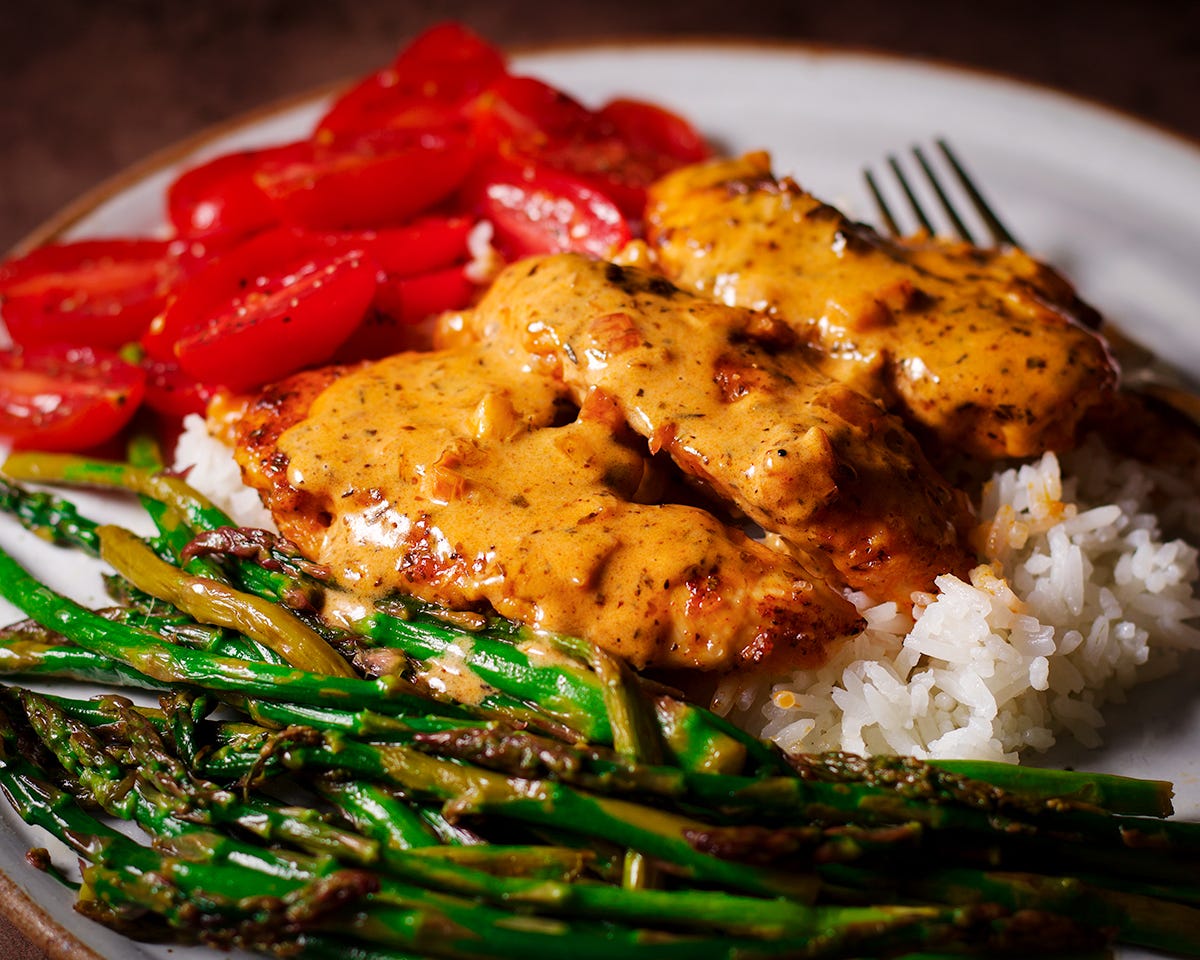
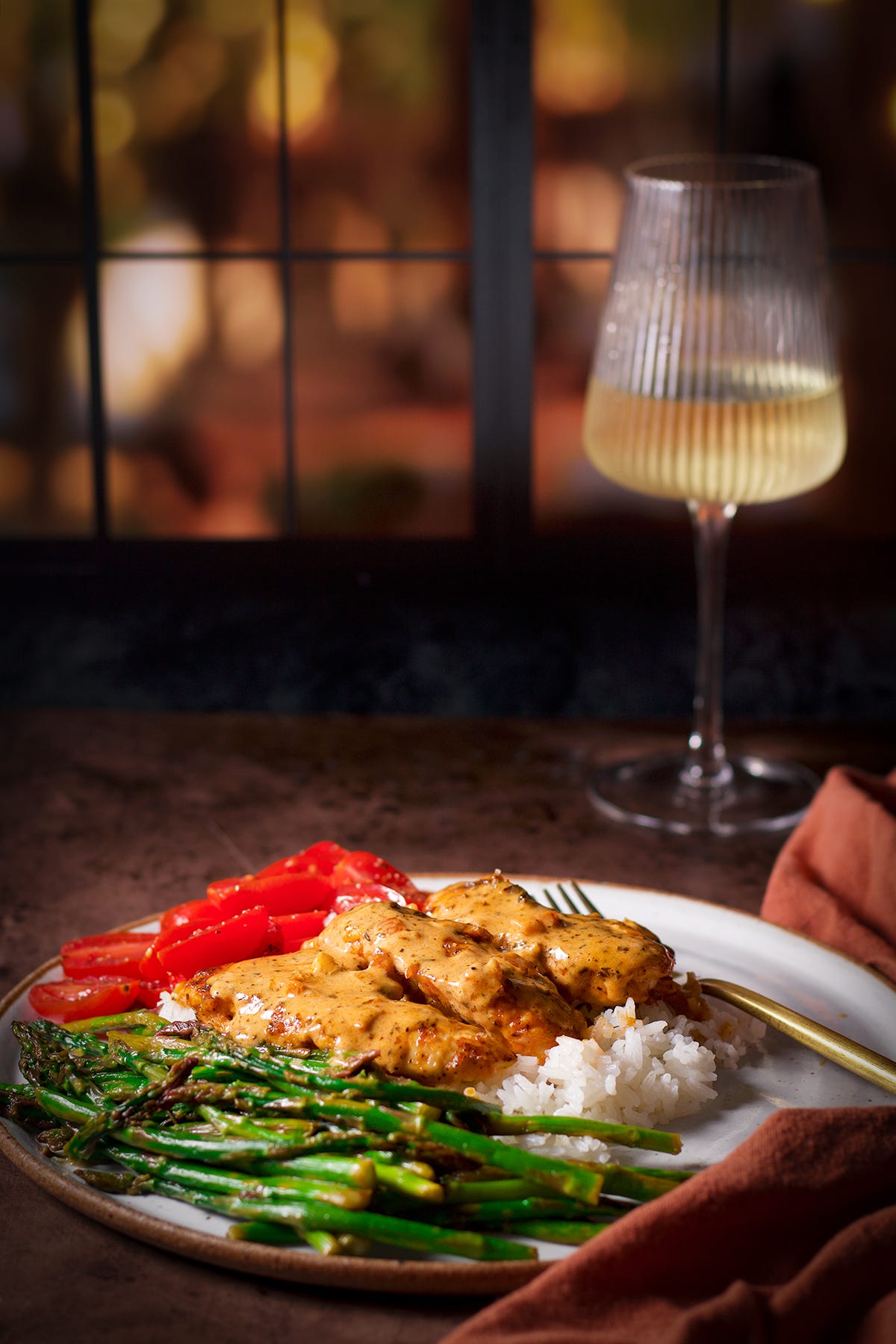
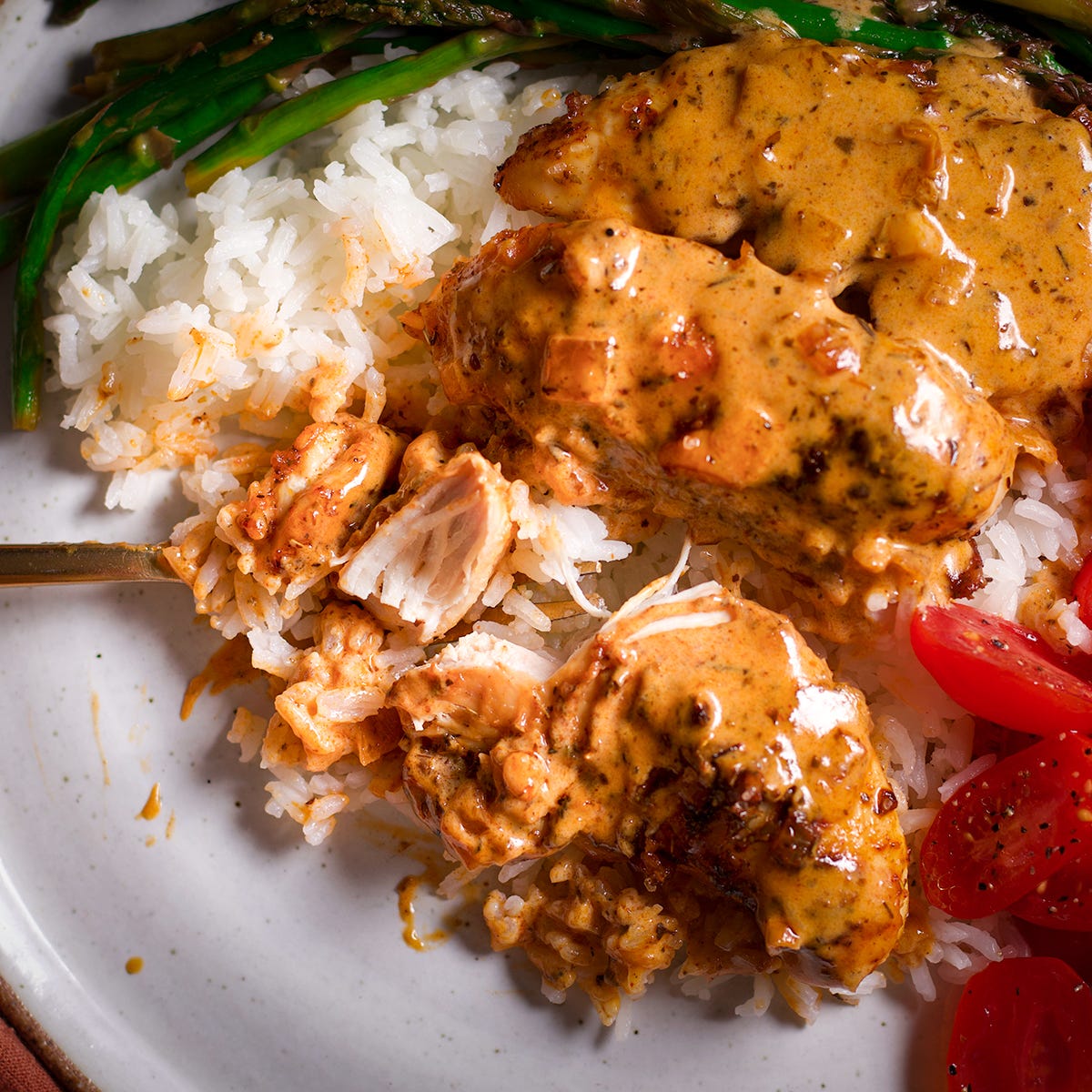

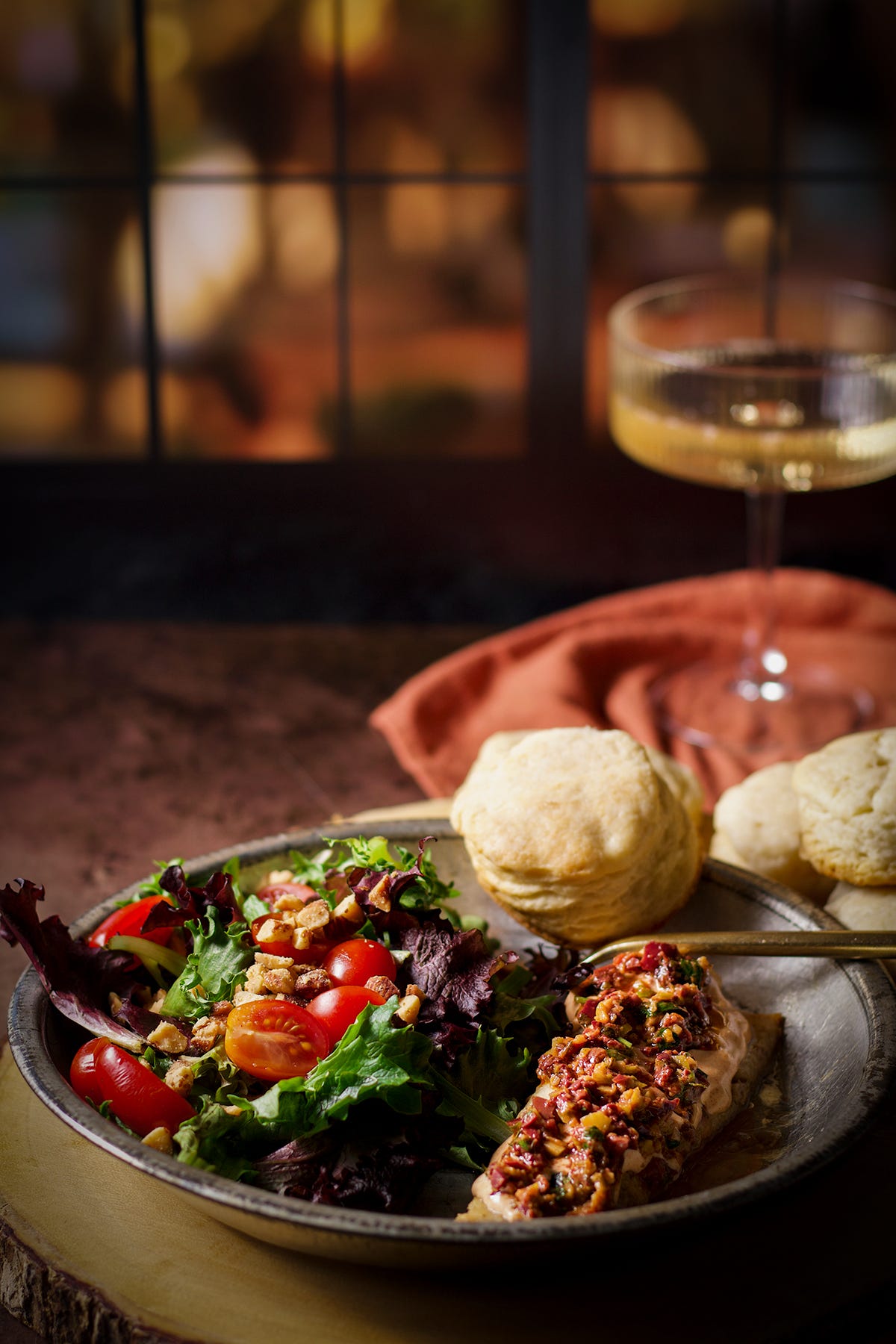

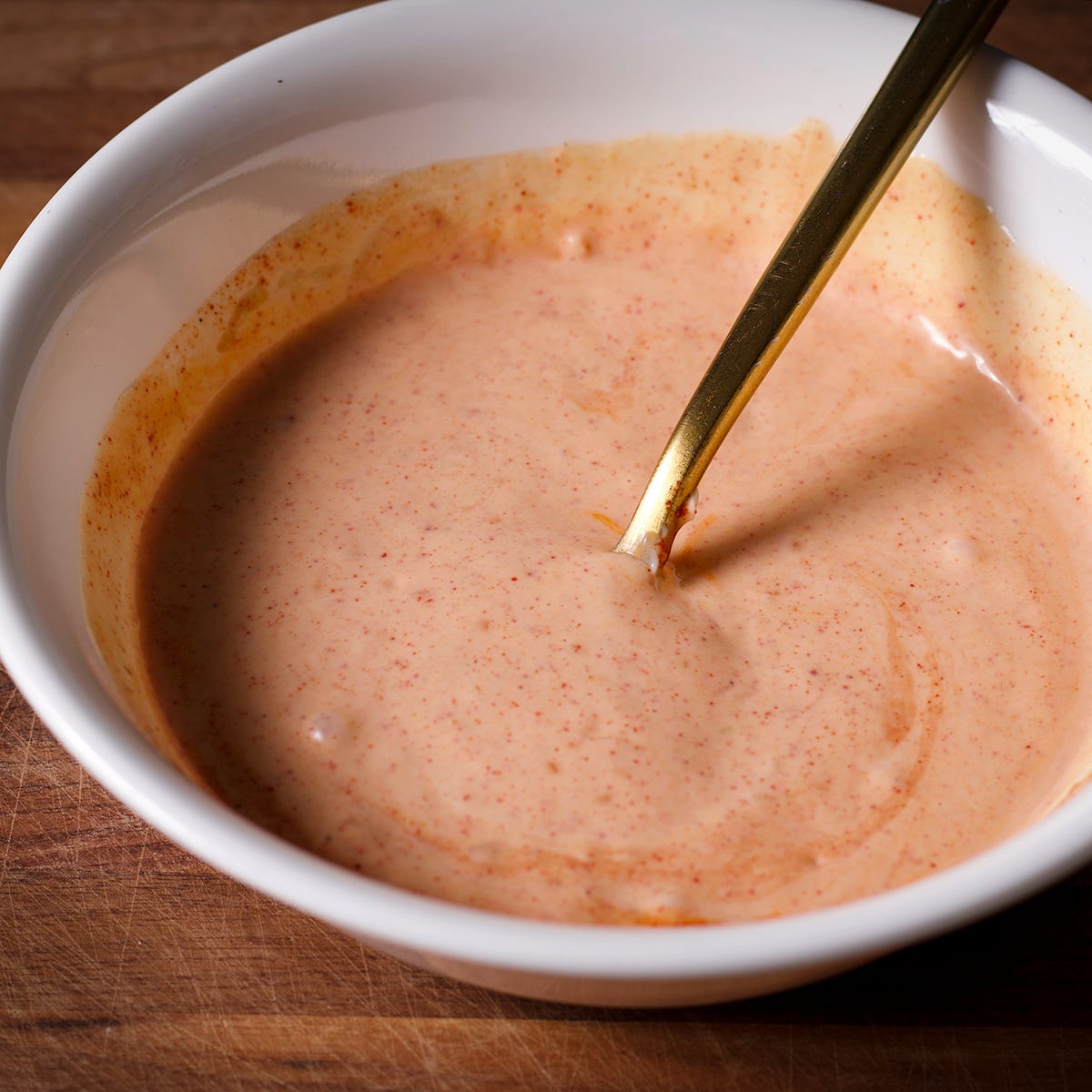




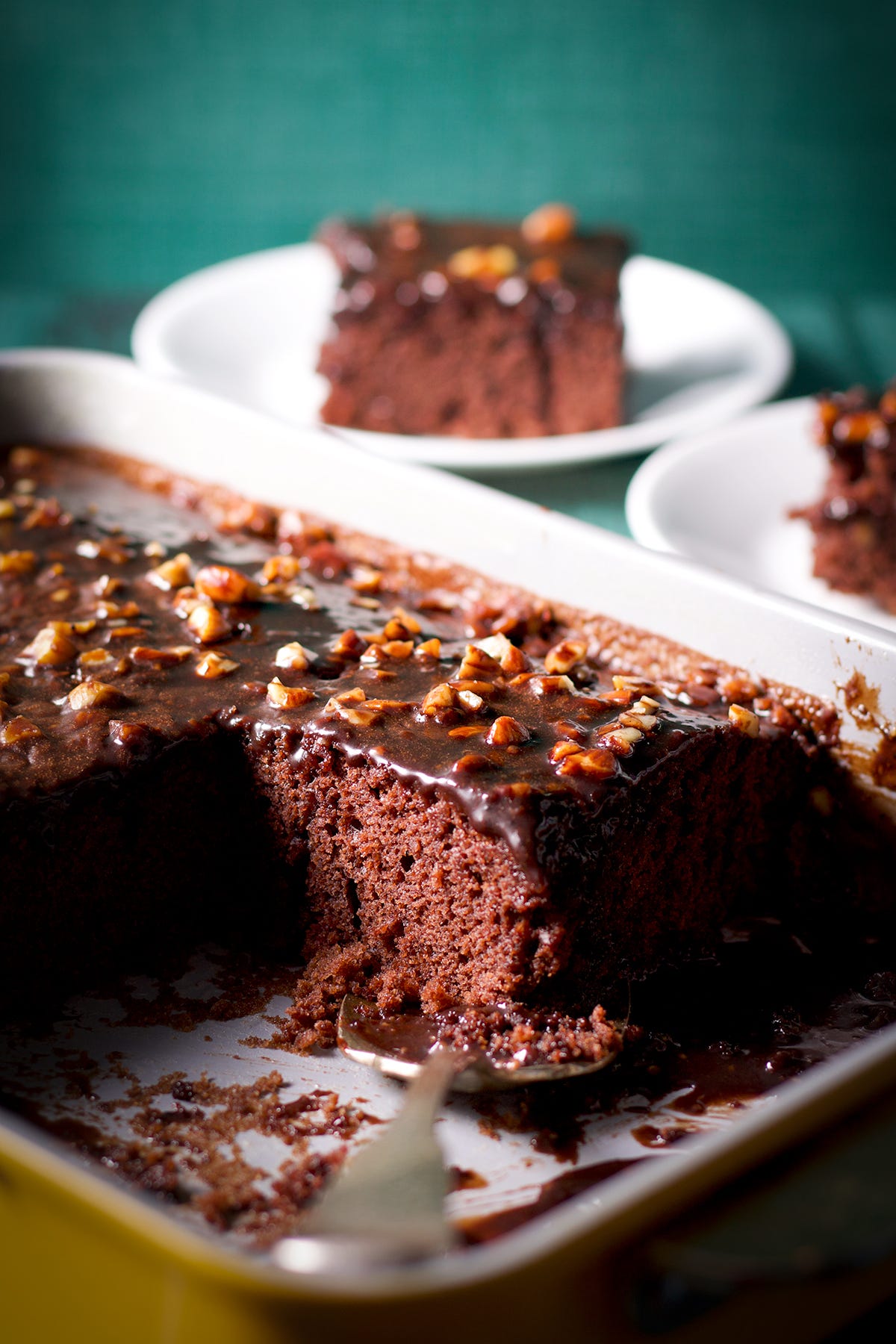
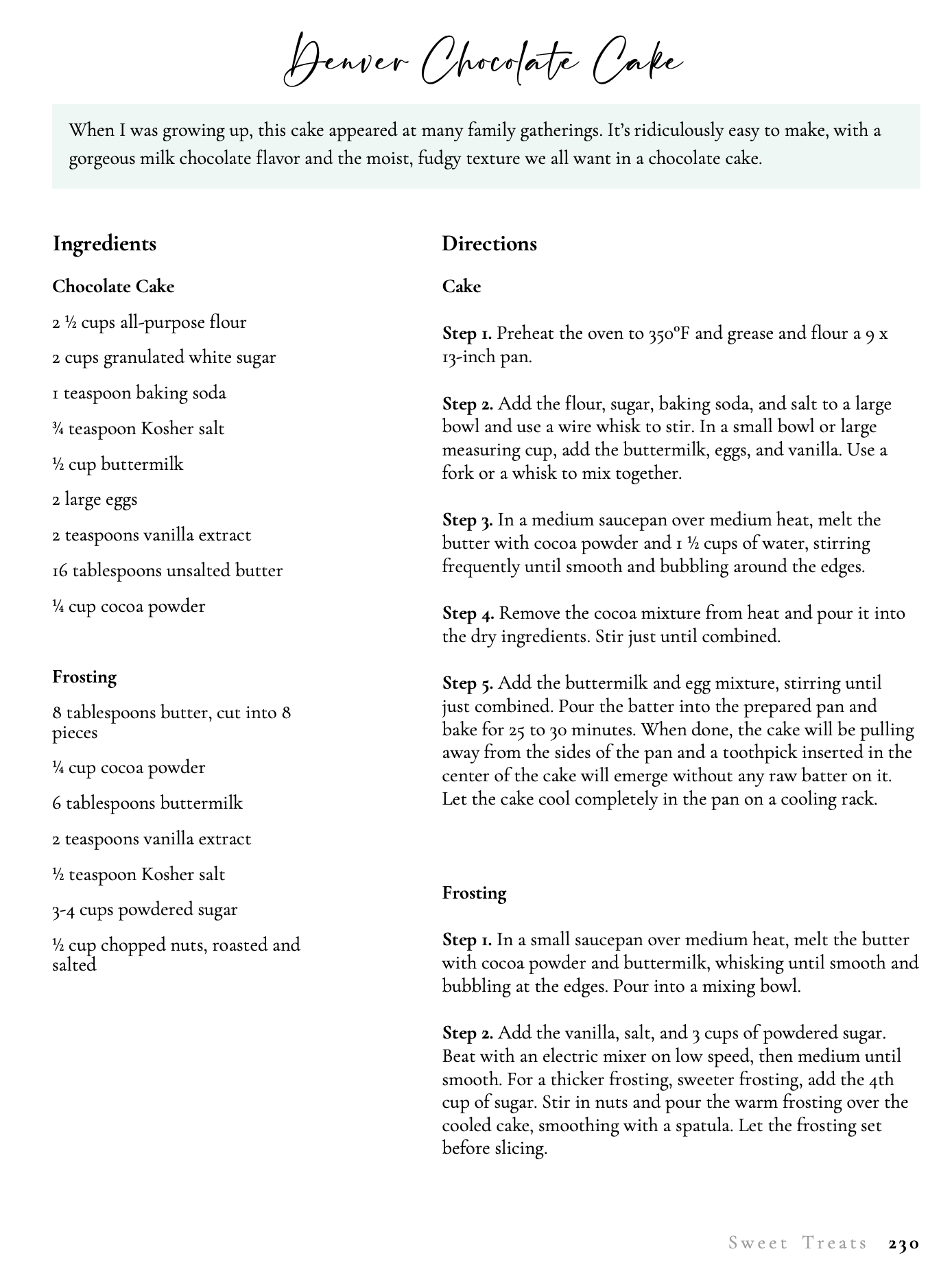
Love olive tapenade and that fish dish is going on the menu this week, yum! Everything looks divine, Rebecca. Oh that pistachio cream!
Coooor, that pistachio pastry cream!! I will be trying those desserts for sure.
Gorgeous as always